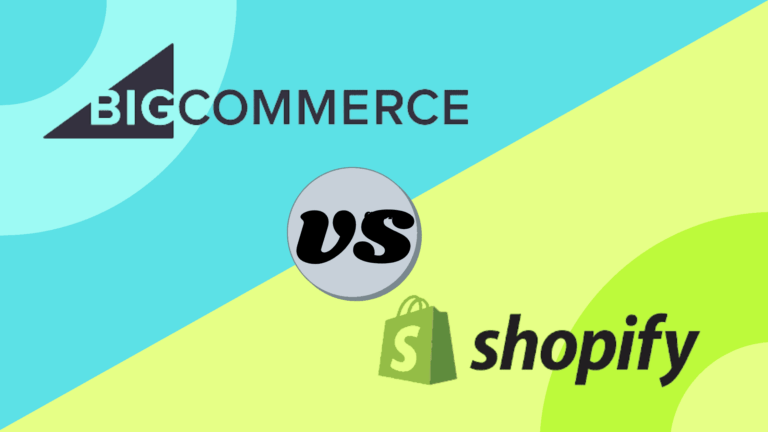What is eCommerce?
Evolution is a process of natural selection with an emphasis on change and its significance for an efficient tomorrow. Man evolves, situations evolve and so does the means of doing business.
Thousands of years have passed by. We have moved from the barter system to the currency system and now with advancement in technology we have landed in the era of eCommerce. eCommerce dismantled would essentially mean transaction of products, services and money through the internet.

In theory, this would make us a borderless world, wouldn’t it?
Being able to sell or buy from anybody across the globe. Being able to transfer money with just a click. Being able to source from multiple locations and sell to overseas markets. While all of this sounds too good to be true, in reality, it is much more complicated.
Read: How to be a Successful Entrepreneur?
Complicated not because it is difficult to implement rather because it is difficult to be differentiated.
Since technology has become an integral part of our daily routines, even a business enterprise that initially did not sell through eCommerce is now starting to expand and explore.
Competition for a specific product or service is over the roof, making it extremely difficult for businesses to sustain. However, if done right, eCommerce businesses have shown accelerated growth compared to conventional businesses.
Significance of 2022
We live in a constantly evolving business environment however, the whole of 2020 was the world came to a standstill.
Due to the drastic effects of the COVID-19 global pandemic, lockdown across multiple nations and an unpredictable future, businesses across all industries suffered drastically.

However, drastic times call for drastic measures. While the establishment of eCommerce businesses was growing for many years, 2020 was a paradigm.
Thousands of businesses started to add eCommerce features to their existing operations and several started completely off the internet. Individuals took time to adapt to online shopping, home delivery of necessities, virtual therapy sessions and whatnot, leaving a footprint on our daily lifestyle.
While situations are going back to normal, some virtual aspects will always carry forward from now on. This is exactly why the year 2022 is of great significance.
This year would mark the beginning of an established coexistence of eCommerce and offline business ventures competing in the same industries, probably for the same goods and services. People have talked about how it was difficult to start a business venture during 2020-2021 amidst lockdown and a global pandemic.
The reality is 2022 would be a greater obstacle for the same. Hence, it is imperative to have an in-depth understanding of how eCommerce operates to be able to kickstart your career.
The Dos of eCommerce
Keep up with the Trends
We live in an era where even originality is inspired by something.
In most cases, eCommerce businesses cater to a larger market segment in comparison to a traditional business.
Check Wikipedia for Article on Ecommerce.

When you cater to a larger demographic, you need to cater to multiple needs and wants across all different potential markets.
Keeping up with the trends does not necessarily mean technology and eCommerce trends but rather being aware of what the trend makers have to offer from season to season.
This works well for businesses that opt for a localization strategy or globalization strategy which requires high customer responsiveness. For more standardized products like a juice mixer, there are hardly any paradigm shifts.
Most common in clothing, skincare, beauty industries where trendsetters pave the way for each business to follow.
Take the winter of 2020 for instance where an old trend came gushing back. A trend of corsets and boot cut jeans, one company innovates, the rest follow.
If one is unaware of such trends, it will be difficult to maintain a competitive edge in such a competitive space.
These trends do not cater to just one locality but sooner or later spread through like wildfire in the influence of social media. Social media demands businesses to stay vigilant.
It is all about the first movers’ advantage. eCommerce business owners need to stay spontaneous, vigilant and quick in terms of incorporating a rising trend into their business operation.
Necessity breeds innovation.
Take COVID-19 Pandemic for instance, as soon as the demand for N-94 masks arose, several eCommerce businesses started to make their masks and sell them over the internet. Hence, it is all about identifying the opportunity and acting faster than your competitors to get a kickstart.
Data Analysis is Key
No matter which online portal is being used, data analysis is key. This is extremely significant because what might work for other businesses might not work for everyone.
If the analytics and insights show that the audience or customers are not as receptive as you expected them to be, there might be a need to opt for a different approach.

Understanding your audience or customers is a priority which can be done via Data Analysis. Not only this, it helps you strategize your future campaigns.
Many companies have made a business out of this. They interpret, analyze and conclude reports of your data. This helps one save money or invest more if the situation permits. Being able to compare your growth to that or your past performance and your competitors not only helps you strategize better but also helps other stakeholders understand the numbers.
Taking an example from my brand, when we initially started with the aim of catering to GENZ with our sustainable apparel we were extremely adamant. After a data analysis of a few campaigns, we realized that we are catering to the wrong demographic.
Sustainable apparel is comparatively expensive and with limited options hence not completely appealing to a GENZ demographic.
Soon we realized, our target audience was the millennials because they have the disposable income to spend on premium products. Things would be different if we had not analyzed the data from our insights and would still be catering to the wrong demographic.
Hence, this allows the businesses to exploit their qualities by improving on their audience identification, customer service and product range.
Keep yourself connected to your Customers
Customer satisfaction and customer engagement are what will help an eCommerce business remain competitive.
While there is no physical contact between the customer and the businesses, make sure to stay connected virtually. Connected does not essentially mean through your website or pages but rather refers to the after-sales service that is provided to them.

Now some offline industries like automobiles have this inbred in their operational practices. Anybody who buys a car will at some point bring it for repair or cleaning at their after-sales facilities.
However, for eCommerce business owners, you will have to take a proactive approach in ensuring that there is active communication and engagement with your customers post selling to them.
This can be as simple as a feedback form or as elaborate as a video testimonial. Make sure you remind your customers why they chose your business amongst the pool of many.
Keep interacting with them by creating a “Mailing list”. Ensure you give them all the information about your e-Business. Whether it is a new product, a new blog featured on your website, a new service, greeting on occasions, etc interaction should not stop.
What keeps an eCommerce business going is not the first purchase but rather the second order. This is because, for an offline business, there is physical interaction to judge the customers’ shopping experience however, in an online space, a reorder displays satisfaction.
The customer should feel part of your community and this feeling can be achieved through hedonic marketing. Making the buyer emotionally attached to your brand hence guaranteeing a repurchase and emotionally stopping them from buying from your competitor.
Strong Policies
This is one of the most significant Do’s when operating an eCommerce business.
Having strong policies would not only secure the business from any allegations but would also help maintain clear communication. While this is significant in cases of both products and services, policies vary for both.

All budding eCommerce businesses cannot offer return and exchange policies, which is why it is significant to put it out there. A client would only have security in buying something once they have inspected the product however, online shopping acts as a limiting factor.
This leaves room for several defects, missing products, wrong products, etc being delivered as an end product. While these processes can only be controlled to an extent, the repercussions can be limited.
Having strong policies gives room to build mechanisms to assist with customer problems while also having a clear legal ground based on full disclosure. Take examples of intimates, they are usually non-exchangeable and returnable due to hygiene factors.
Having displayed the right size chart and clear policies indicating no exchange or return would secure the business’s stance from any allegations.
Similarly, for a service provider, there should be strong policies in cases of hygiene, behavior, professionalism, etc to maintain a healthy working environment.
During the COVID-19 Pandemic, Uber drivers have clear instructions to sanitize their vehicles before the next passenger arrives. This gives customers a sense of security and relief.
These policies communicate certain factors on both ends leaving less or no room for misunderstandings and wrongdoings.
Educate your Audience
Most eCommerce companies, irrespective of the platform they choose, operate as silos. However, the key criteria for engaging your audience and customers is by educating them.
As said before, irrespective of the portal the company chooses to operate on, they should have a strategy to build a community. Educating the audience gives them more than what they expect out of the brand.

Take Nike for instance, they are a shoe manufacturing company with a partly eCommerce presence.
However, they constantly find innovative ways to keep their customers educated. They launched the Nike Training Club and Nike Run Club where they ensure they educate their customers about fitness.
They release training videos, videos from other participants, thus building their community.
When we look at smaller scale eCommerce companies, mine, for instance, we initially just tried to engage our customers with product videos, pictures, etc.
After a point, we realized that the audience would want more, especially the customers who have already ordered would not want to see the same product pictures now and then.
Hence, we decided to educate our customers by making videos on how to switch to sustainability. We started to tell them tips and tricks that they can use in their daily lifestyle to make a switch to a conscious lifestyle.
We got an overwhelming response because the audience was getting something more than what they expected. Similarly, ever noticed how when you enter a beauty store like Mac, they have professionals across the store who will teach the potential customers how to apply makeup by educating them.
The same strategy needs to be applied by eCommerce businesses to add that extra value to their customers’ shopping experience.
The Don’ts of eCommerce
What works for Everyone might NOT work for you:
Since eCommerce is so widespread across multiple portals like websites, Instagram, Facebook, Applications, etc it is hard to understand which platform would be the most appropriate to deliver your product or service.
A wrong distribution channel can result in wasted efforts, resources and time.

Hence, understanding which platform or strategy works best for you is integral. What might work for other eCommerce Companies might necessarily work for you too. To understand the perfect fit in terms of distribution channels/portals, the company needs to understand its target market.
Which demographic and market segments are you catering to and which platform are you likely to use most. Similarly, which marketing strategy are they going to be most receptive towards.
Take the example of a clothing manufacturer for instance. The same eCommerce company is making apparel like tees, joggers, masks, etc. While the company would easily be able to sell tees and joggers through portals like Instagram, they would find platforms like Amazon as a better option to sell masks.
This is because, if somebody wants to buy a mask most conveniently with the fastest delivery would prefer to order it from Amazon Prime compared to a tee.
Similarly, eCommerce businesses taking customizations would rather operate through a website than through Amazon. They would want their customers to have the ease of customizing their product to their satisfactory level which would be more efficient through a website.
Hence, it differs from business to business but since eCommerce is such a competitive space, having the right distribution channel can help reach the right audience.
Overflow of Information:
Overburdening your audience or customers with information can lead them to be disinterested. In most eCommerce platforms, especially Instagram engagement is key.
The new Instagram algorithm works in such a way that it promotes or boosts posts with more engagement. If a business keeps spamming their audience with multiple stories, posts, any form of communication for that matter, they will lose interest.

This way, the algorithm will not let your posts reach their maximum potential and more individuals, thus restricting your audience. Concise, appropriate, knowledgeable and simple flow of information will maintain a balance across your community.
Similarly, on other platforms like websites or emails, if you keep burdening your audience with extra information they will unsubscribe from all portals due to an overflow of information.
The audience only wants educational content that is of interest to them or advantageous to them, not access information that the business wants to share with their audience.
Greenwash:
The concept of greenwashing is not alien and is something that happens now and then. Not just limited to conventional business models but also several eCommerce businesses.
Greenwashing essentially means conveying disinformation or the information not being parallel to that of the result. This is more common in online business setups because there is less or no room to test and try the product or the service.

There are so many different memes all across the internet about how a certain product turns out to be different from what it looked like. Even the biggest of brands have been allegedly greenwashing their products.
A review goes a long way. In such a competitive business space, greenwashing can put a strain on your brand name and discourage potential customers to order from you. Uncountable fashion companies greenwash by putting up untrue pictures of their products.
Later, once the customer receives it they will either notice a fitting issue, a color issue and whatnot.
The priority here is to make your customers feel secure and assure them that you are a business enterprise that does not greenwash. This could be reduced by putting up videos of your products, putting up pictures of your customers using your product or even through written testimonials.
Another way of preventing this can be by asking influencers or celebrities to endorse your products or services.
Through this, their followers would be sure that the product or service is authentic due to the reputation of the individual promoting it. This will give the potential customers an assurance of the product or service being authentic and true to what is claimed.
Overpromise and Underdeliver:
Setting reasonable and practical standards for your product or service is the wisest of all. However, setting false or extremely high expectations for your offering will only leave the customer unsatisfied.
This is extremely common in eCommerce business ventures because they want to show themselves as the perfect option in that particular industry. This leads them to over-promise the benefits or qualities of their products or services to show themselves as differentiated.

However, this harms their image and reputation of a brand. The customer might agree to purchase the offering however will not come back for more if their expectations are not met.
This is more common in the beauty industry. Ever notice an anti-ageing moisturiser advertisement promising fewer wrinkles, glowing skin, etc?
Seems too good to be true right?
Every business births from a problem, catering to a solution for the same. When the customer sees the solution promised is false, they leave a negative review.
Similarly, if the anti-aging cream does not show its magic, they are most likely to never buy the same product again. The gravity of this is more intense in the case of eCommerce businesses delivering services.
Imagine booking an appointment with UrbanClap for plumbing and the plumber not able to fix the problem. Would you use the app again or call your local plumber?
This is because there is a physical interaction between the client and the provider in the case of a service offering. Hence, it is wise to set realistic expectations for your customer so they would always feel satisfied after their experience.
Don’t Overprice:
We live in an era where there is a constant threat of substitutes. Especially in a virtual space where millions of eCommerce businesses are competing, overpricing your product or service would only mean your nemesis.
No matter how good the quality of your offering is, how premium your market is, always be in the same range as your competitors.

By increasing your price you enter a different ballpark altogether that limits your potential market. Pricing your product or service right will only increase your credibility as a business.
Ever noticed how competitive McDonalds and Burger King are? While they are an offline business venture, even on portals like Zomato, Swiggy and other delivery apps their prices are almost the same.
When your market is so tight, pricing cannot be a differentiating factor. Similarly, in their case, their differentiation is the taste of their burgers or their range of products. If either one of them placed their products high, they would essentially lose a big chunk of the demographic.
Sometimes, the product we did not even think was our competition turns out to be a substitute.
The car Nano in India has the same price range as many Motorcycles, which means that anyone who wanted to initially buy a bike can even buy a car because of the price range. These similar situations can arise for several eCommerce businesses at any given point. Hence, keep analyzing your market, competitors and substitutes.
Understanding Tools and Portals
It is significant to understand that all eCommerce businesses operate on different platforms or portals that come with their own set of challenges and advantages.
Hence, it is important to understand the functionality of each of them.
While portals like Amazon, Flipkart, etc are birthing grounds for many e-commerce businesses, there are many that operate on other platforms.
Instagram:
- Instagram Reels – While our IGs are flooded with dance reels and dog videos, believe it or not, but the new IG algorithm helps you reach millions if you curate educational content. Using this as a tool can be extremely beneficial. Several eCommerce companies have used them to showcase their products and services.
- Hashtags – Finding the right audience is easier by segmenting them through hashtags. Finding them between a range of 70k-110k gives you more visibility amongst your target market. This way you can even generate specific business hashtags to build your community.
- Business insights – Checking insights is addictive because it helps you in understanding what exactly is working and what is not. This is one of the most significant tools because it helps you understand the responsiveness of your demographic.
- Engaging your community – Usage of Polls and question boxes helps you interact with your audience directly giving you a better understanding of what they want. These short easy questions help the business plan its future strategies and offerings.

- Quick Chat – This is a time saver and helps you be more structured and organized when you have thousands of message templates and millions of people to reach out to. This is a great way to engage with your potential customers by reaching out to them asking them to check your eCommerce business.
- IG stories – 15 seconds, perfect tool to cater to the attention span of an individual just scrolling through Instagram. Short, simple, concise content that helps engage your audience.
- Swipe up – IG has a swipe-up story feature where you can attach links to websites, IGTVs, etc re-directing your viewers at such ease.
Facebook:
Facebook shops are a great way of reaching a larger audience with just a few clicks. A lot of businesses sell through Facebook because of what it offers.
For Example, Facebook Ad Manager is a great way to promote your content with all the necessary information to your categorized market segment.
It allows you to boost posts and also gives the businesses to filter the audience they are reaching out to.
This massively helps in the engagement of the page and also makes the community more aware of your brand.
One can even use the Facebook brand manager to boost Instagram posts.

Recently, Levis did a campaign called “Live in Levis” where they featured all types of different women wearing levis. They boosted the post allowing it to reach millions of people in their demographic.
Websites and SEO:
The oldest and most common eCommerce portals are websites.
The key thing to remember is to have a permanent memorable domain name. The domain name is essentially your key to building customer loyalty.

Secondly, the website template and appearance need to be presentable, clear, engaging and informative. The customer should not have any technical issues with the interface, hence making it extremely user-friendly. Most e-businesses don’t have good reviews because of their poor interface making it difficult for the customer to browse through.
The website should have segregated pages for different types of information. This will help the customer identify which information is available thus making the interface easily usable.
Lastly, the key to reaching more potential customers is to have a strong SEO reach. SEO essentially allows pages to appear on trending or most viewed google searches allowing the business to reach more individuals and helping them stand out amongst their competitors.
By having a strong SEO, your e-Business will be more credible to users, having secured payment portals and generating unique business opportunities for you to engage with.
This is extremely important specifically starting an online business in 2022 due to an excessive rise in e-entrepreneurial ventures all competing against each other.
Portals
Having the right distribution channel is the most important when it comes to eCommerce businesses. With hundreds of portals available choosing the appropriate one can be a task. The most popular portal necessarily might not be a perfect fit for your business. Depending on the demographic the portal is targeting and the flexibility it occurs, one can choose their portal.
Selling on your website or page includes you keeping all the profits, however with an opportunity comes a cost.
When using such portals, some fraction of the profit or final price is divided with the portal which might not be economically feasible for several businesses. This is why most businesses initially start by selling through their pages and websites.
While they expose you to a wider audience, the contracts are airtight. This means there is little or no room for you to cut costs or increase margins to remain competitive. Another drawback to having your eCommerce business kickstart through a portal would be the array of competition in the same space.

Ever opened Amazon, Flipkart, Myntra and searched for a product?
The same product will appear but also featuring products of various other brands. This leads your customer straight to your competitors.
Hence, to remain competitive you will have to provide the highest quality, high ratings and also the most cost-effective price.
Adaptation:
2022 is all about adapting to change. Change that hit the entire global market with the COVID-19 Pandemic.
How businesses operated changed from the root and such situations are always going to be unpredictable? Change is the only constant and every business should be flexible enough to adapt to the situation at hand.
2022 will lead to more changes in the fundamentals of many businesses, however, the eCommerce industry will always lead the way.
Conclusion
With the advancement in technology and the ability to reach millions, the most affected by any external factor would be eCommerce businesses. Kickstarting your eCommerce business in 2022 can be a boon or a bane depending on how you decide to function.


Khushi Mehra
Content StrategistA Marketing Consultant and Content Strategist, pursuing a Business and Management degree from Indian School of Business and Finance, an affiliate of University of London and London School of Economics. Founded her own Sustainable Enterprise “Emacity World” back in 2020 with 4 of her other co-founders.
Related Articles:
- Master Self-Discipline: Transform Your Life in 2025 with These Essential Strategies!

- Ebook Design for Children’s Books: Capturing Young Minds Visually

- Expanding on the Value of Professional Fashion Design Services

- Get Custom African American Character Illustrations with Any Hairstyle

- Transform Your Look with Rasaline’s Expert Hairstyle and Fashion Advice

- Study Smarter, Not Harder: Your Ultimate Guide to Academic Success







